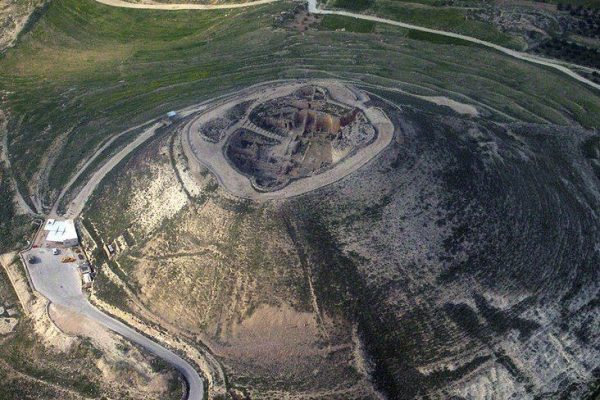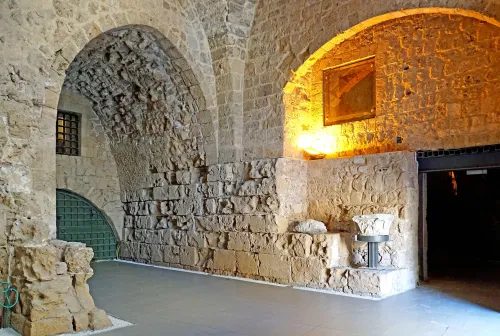
Nestled about 10 kilometers south of Jerusalem lies the awe-inspiring archaeological marvel known as Herodium. This historic site boasts not only an impressive palace dating back to the reign of King Herod but also serves as the final resting place of this enigmatic ruler. With its tumulus-shaped hill and rich history, Herodium stands as a testament to King Herod’s architectural prowess and vision.
Unearthing History:
Herodium, also referred to as the “Mountain of Franks” or “Jabal al-Fourdis,” holds a significant place in archaeological and historical narratives. Dating back to the time of King Herod, who ruled Judea from 37BC to 4BC, this site served as a multifaceted complex encompassing a palace, fortress, and burial site. Its strategic location offered commanding views of the surrounding landscape, making it an ideal stronghold for Herod’s reign.
Architectural Marvels:
King Herod, known for his ambitious building projects, left an indelible mark on Israel’s architectural landscape. Herodium stands as one of his most ambitious endeavors, requiring extensive reshaping of the hilltop and the labor of countless slaves and artisans.

The palace-fortress, adorned with courtyards, palatial halls, and chambers, showcased Herod’s dedication to luxury and grandeur.
Engineering Feats:
Beyond its opulent design, Herodium also boasts impressive engineering feats. Herod’s vision included a sophisticated aqueduct system that channeled nearby springs to supply water for the complex’s needs. This system not only sustained the gardens but also fed into a vast pool, serving as a testament to Herod’s ingenuity in ensuring the comfort and security of his palace.
Legacy of Innovation:
King Herod’s legacy extends beyond Herodium, encompassing iconic structures such as the Second Temple in Jerusalem, the fortress of Masada, and the bustling port of Caesarea.

His patronage of architecture and engineering not only elevated Judea’s stature but also left behind enduring monuments that continue to fascinate and inspire generations.
Preservation and Exploration:
Today, Herodium stands as a testament to the rich tapestry of history woven by King Herod. Ongoing efforts in preservation and exploration allow visitors to delve into the depths of this ancient marvel, unraveling its secrets and marveling at its architectural splendor. Guided tours offer insights into Herod’s reign and the significance of Herodium in shaping the region’s cultural and historical landscape.
Conclusion:
Herodium stands as a timeless testament to King Herod’s legacy, blending architectural grandeur with historical significance. From its humble beginnings as a hilltop fortress to its transformation into a palatial retreat, Herodium embodies the vision and ingenuity of one of history’s most influential rulers.

As visitors explore its corridors and marvel at its engineering feats, they are transported back in time to an era of opulence and ambition, where Herod’s legacy continues to resonate through the ages.
With ongoing preservation efforts and guided tours, Herodium remains a beacon of history, inviting visitors to uncover its secrets and bask in the majesty of King Herod’s enduring legacy.





